Crate training a Border Collie, a breed renowned for its intelligence, energy, and sensitivity, is an important aspect of their training and development. This guide is tailored to help Border Collie owners navigate the crate training process effectively, ensuring a positive experience for both the dog and the owner. Understanding the specific needs of a Border Collie pup and applying the right training techniques are crucial for successful crate training.
Read More: The Benefits of Dog Crate Training
Key Takeaways:
-
Understanding the Breed: Gain insights into the unique characteristics of Border Collies and how they impact crate training.
-
Effective Crate Selection: Learn about selecting the right crate size and type to ensure comfort and safety for your Border Collie.
-
Integrating Potty Training: Discover strategies for combining crate and house training for efficient and effective housebreaking.
-
Addressing Behavioral Challenges: Get tips on managing the high energy and potential anxiety issues common in Border Collies during crate training.
-
Balancing Crate Time: Understand the importance of balancing crate time with ample exercise and mental stimulation for a well-rounded Border Collie.
Embarking on the journey of crate training your Border Collie can be a rewarding experience that enhances your dog’s sense of security and your relationship with them. This guide aims to provide you with the essential tools and knowledge to make crate training a successful endeavor.
2. Understanding Border Collies
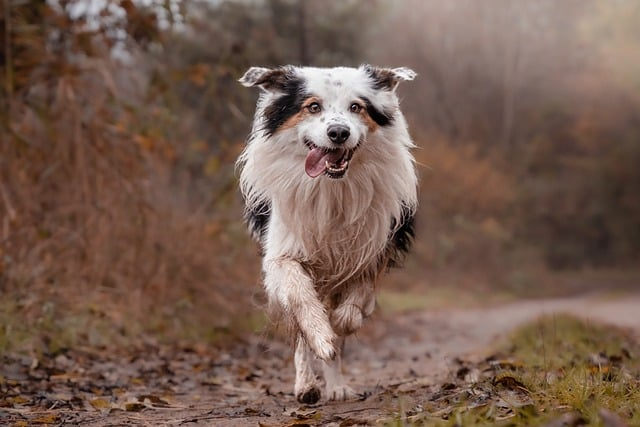
Before embarking on crate training, a clear understanding of Border Collies’ unique traits is crucial. This knowledge will significantly influence how you approach their training.
-
Intelligence and Energy: Border Collies are exceptionally intelligent and active. They are quick learners but require mental and physical stimulation to prevent boredom.
-
Sensitivity: Known for their sensitivity, they respond well to positive reinforcement but can become anxious or stressed with harsh training methods.
-
Herding Instinct: Their natural herding instinct can sometimes lead to unwanted behaviors like chasing or nipping, which should be managed through training.
-
Social Needs: Border Collies thrive on human companionship and can develop separation anxiety if left alone for extended periods.
Training Considerations:
-
Consistency and Patience: Due to their intelligence, Border Collies can quickly pick up on training cues, but consistency and patience are key.
-
Exercise and Stimulation: Incorporate plenty of exercises and mental challenges into their routine to keep them engaged and content.
-
Early Socialization: Expose them to various environments, people, and other dogs early on to ensure they are well-adjusted.
Read More: See our Puppy Socialization Checklist
3. Selecting the Right Crate

Choosing the right crate for your Border Collie is essential for successful crate training. Consider the following factors:
-
Size: The crate should be large enough for your dog to stand, turn around, and lie down comfortably but not so large that they feel insecure. For most Border Collies, a 36-inch to 42-inch crate is appropriate.
-
Type:
-
Wire Crates: Offer good ventilation and visibility. They are foldable for easy storage and often come with adjustable dividers.
-
Plastic Crates: More enclosed and can feel more den-like, good for travel.
-
Soft-Sided Crates: Lightweight and portable, suitable for calm dogs and travel.
-
Pros and Cons:
-
Wire Crates:
-
Pros: Good airflow, visibility, and adjustable size.
-
Cons: Can be heavy and less cozy without additional bedding.
-
-
Plastic Crates:
-
Pros: Enclosed space provides security; good for travel.
-
Cons: Can get hot and have limited visibility.
-
-
Soft-Sided Crates:
-
Pros: Light and easy to transport.
-
Cons: Not suitable for puppies or chewers; less durable.
-
Your choice will depend on your Border Collie’s size, temperament, and your lifestyle, including travel needs and space in your home.
4. Preparing for Crate Training
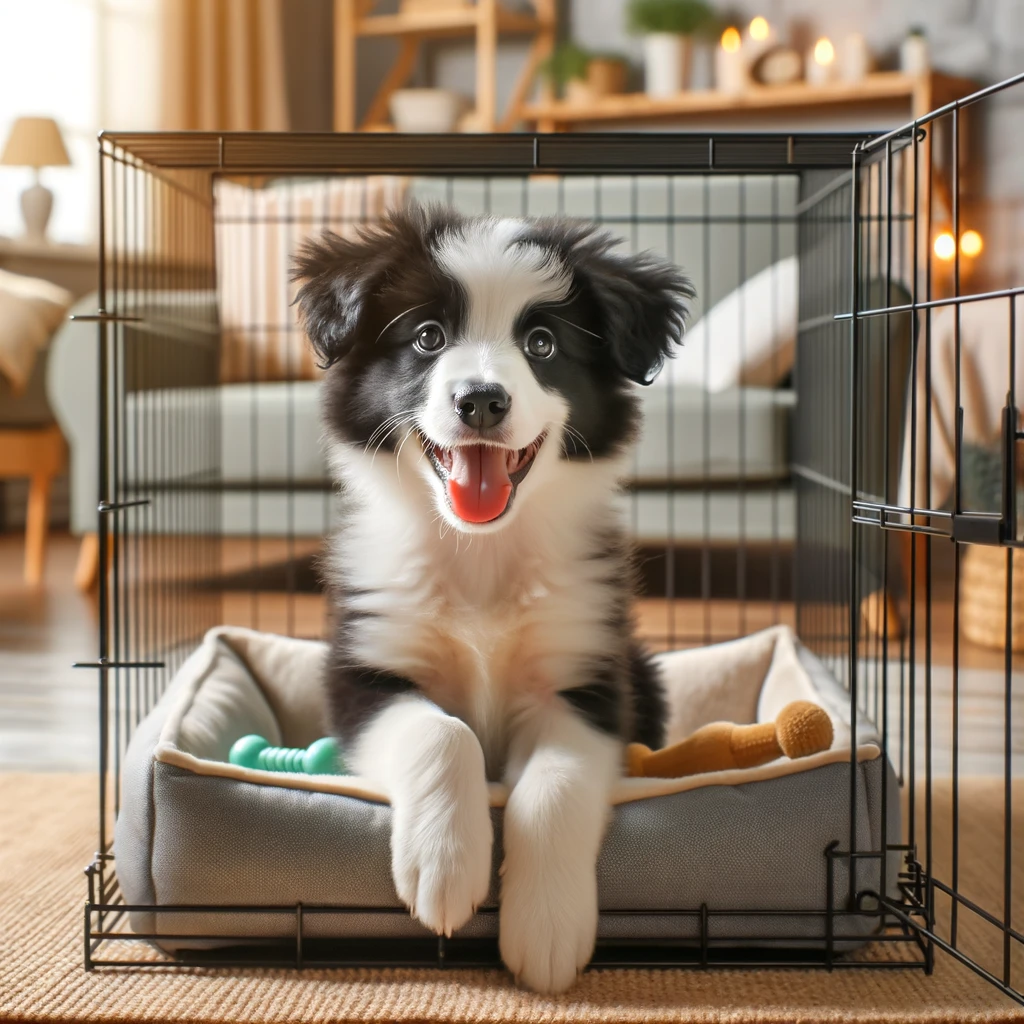
Proper preparation is vital for successful crate training, especially for a breed as intelligent and sensitive as the Border Collie. Setting up the right environment and introducing the dog crate first in a positive way are key steps.
Setting Up a Comfortable Crate Environment:
-
Cozy Bedding: Place comfortable bedding inside the crate. A soft, washable mat or blanket can make the crate inviting. You want your pup to like their crate.
-
Familiar Items: Adding a favorite toy or an item with your scent can provide comfort and reduce anxiety, making the crate feel like a safe space.
-
Water Access: For longer periods in the crate, ensure your Border Collie has access to fresh water. Clip-on water bowls or spill-proof dishes can be a practical solution.
Introducing Your Border Collie to the Crate:
-
Gradual Introduction: Allow your Border Collie to explore the crate at their own pace. Keep the crate door open and encourage exploration with treats and gentle coaxing.
-
Positive Associations: Use praise and treats to reward your dog when they enter the crate. Creating positive associations from the start is crucial.
-
Feeding Meals in the Crate: Begin by placing your dog’s food bowl near the crate, gradually moving it inside. This helps them associate the crate with pleasant experiences.
Creating a Positive Routine:
-
Consistent Scheduling: Establish a routine for using the crate. Regular feeding times, playtimes, and crate times help your dog understand and adapt to the schedule.
-
Short Duration at First: Start with short periods in the crate and gradually increase the duration as your Border Collie becomes more comfortable.
-
Supervised Time: Initially, stay in the room with your dog while they are in the crate to provide reassurance. Gradually increase the time your dog spends alone in the crate.
Preparing your Border Collie for crate training involves creating a welcoming environment and introducing the crate in a way that builds positive associations. This early preparation sets the foundation for a successful and stress-free crate training experience.
5. The Crate Training Process
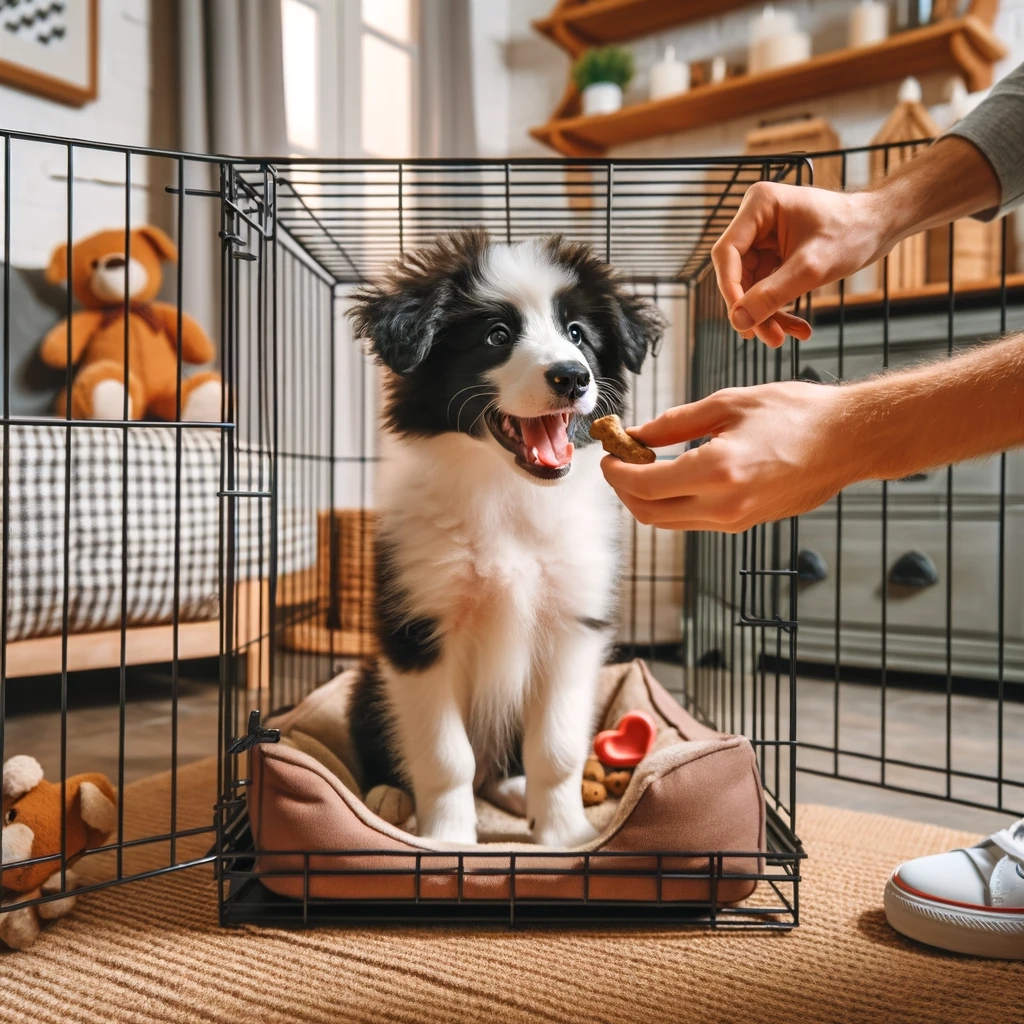
Crate training a Border Collie is a gradual process that requires patience and understanding. By following a step-by-step approach, you can ensure your dog feels safe and comfortable in their crate.
Step 1: Familiarization with the Crate
-
Encourage Exploration: Place treats and toys inside the crate to entice your Border Collie to enter. Do this several times a day without closing the door, allowing them to come and go as they please.
-
Positive Reinforcement: Each time your dog enters the crate, praise them warmly. This positive reinforcement helps them associate the crate with good experiences.
Step 2: Feeding Inside the Crate
-
Mealtime Inside the Crate: Once your dog is comfortable entering the crate, start feeding them their meals inside, initially with the door open.
-
Closing the Door: As they become accustomed to eating in the crate, gently close the door while they eat, opening it as soon as they finish. Gradually increase the time the door stays closed after they have eaten.
Step 3: Increasing Time Spent in the Crate
-
Start with Short Sessions: Begin by having them in the crate for short periods, around 10-20 minutes, while you are at home. Gradually increase the duration as they show signs of comfort.
-
Calm Departure: As your Border Collie becomes more comfortable, start leaving them in the crate for brief periods when you leave the house. Begin with short absences, gradually increasing the time.
Step 4: Extending Crate Time
-
Longer Durations: Once your dog is comfortable being in the crate for about 30 minutes without showing anxiety or distress, you can start crating them for longer periods.
-
Include Quiet Time: Ensure some crate time is during quieter periods of the day to encourage relaxation and napping.
Step 5: Overnight Crating
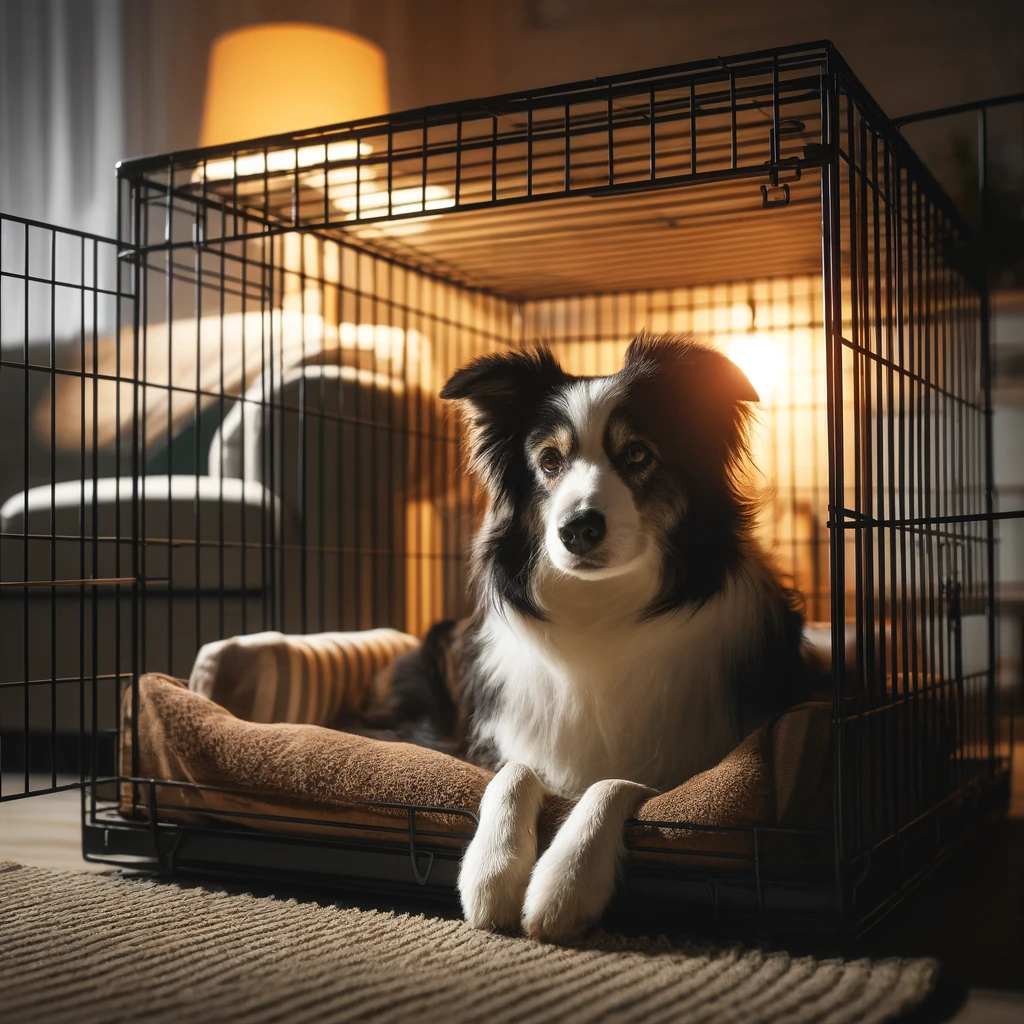
-
Introducing Nighttime Crating: Start by placing the crate in your bedroom or nearby so your Border Collie doesn’t feel isolated. If you plan to move the crate to another area eventually, gradually shift it over time.
-
Ensuring Comfort: Make sure your dog has had a chance to relieve themselves before bedtime and that they have comfortable bedding in the crate.
Monitoring and Adapting
-
Watch for Anxiety Signs: Be alert to signs of stress, such as excessive whining or pacing, and adjust the duration in the crate accordingly.
-
Adapting the Routine: If your dog seems uncomfortable, take a step back in the process, reducing the time in the crate and slowly building it up again.
This step-by-step process helps in acclimating your Border Collie to sleep in the crate, ensuring that it becomes a space where they feel secure and relaxed. Remember, each dog is unique, and the pace of training will vary. Patience and consistency are key to successful crate training.
6. Integrating Crate and Potty Training for Border Collies
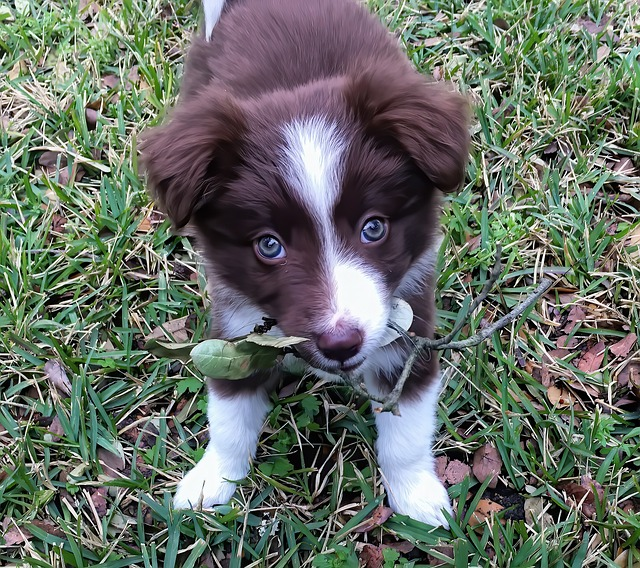
Effectively combining crate and potty training is beneficial for Border Collies, leveraging their instinct to keep their sleeping area clean. This approach helps in establishing consistent potty habits.
Setting Up a Potty Train Routine:
-
Establish a regular schedule for potty breaks, especially important after meals, playtime, and waking up. Puppies, in particular, may need to go outside every 2-3 hours.
-
Immediately take your Border Collie to a designated potty area after each crate session. This consistency teaches them the routine of eliminating outside after being in the crate.
-
If your Border Collie doesn’t relieve themselves during a scheduled break, return them to the crate and try again after about 15-20 minutes, reinforcing the purpose of potty trips.
Crate as a Potty Training Tool:
-
Use the crate to minimize indoor accidents, especially when you’re not able to supervise your dog.
-
Increase crate time gradually to help your Border Collie develop better bladder control, but always within a reasonable time frame to avoid discomfort, especially for younger dogs.
Responding to Your Pup’s House Train Needs:
-
Learn to recognize signs that your Border Collie needs to go, such as circling, sniffing, or whining.
-
Reward them with praise and treats immediately after they go in the correct spot, reinforcing good behavior.
-
If your Border Collie does not relieve themselves when taken to their designated spot, calmly return them to the crate without making a fuss. Wait about 15-20 minutes before trying again. This helps them learn to hold and go at the right time and place.
Overnight Potty Training:
-
Ensure your dog has a chance to eliminate last thing before bed. Puppies might require a bathroom break during the night.
-
In case of accidents, clean up thoroughly and avoid punishing the dog. Instead, reassess the frequency of nighttime breaks or the last water intake time before bed.
Combining crate with potty training for your Border Collie requires patience and consistency. The key is to establish a routine, respond appropriately to their potty cues, and handle both successes and challenges calmly and positively.
7. Addressing Common Crate Training Challenges
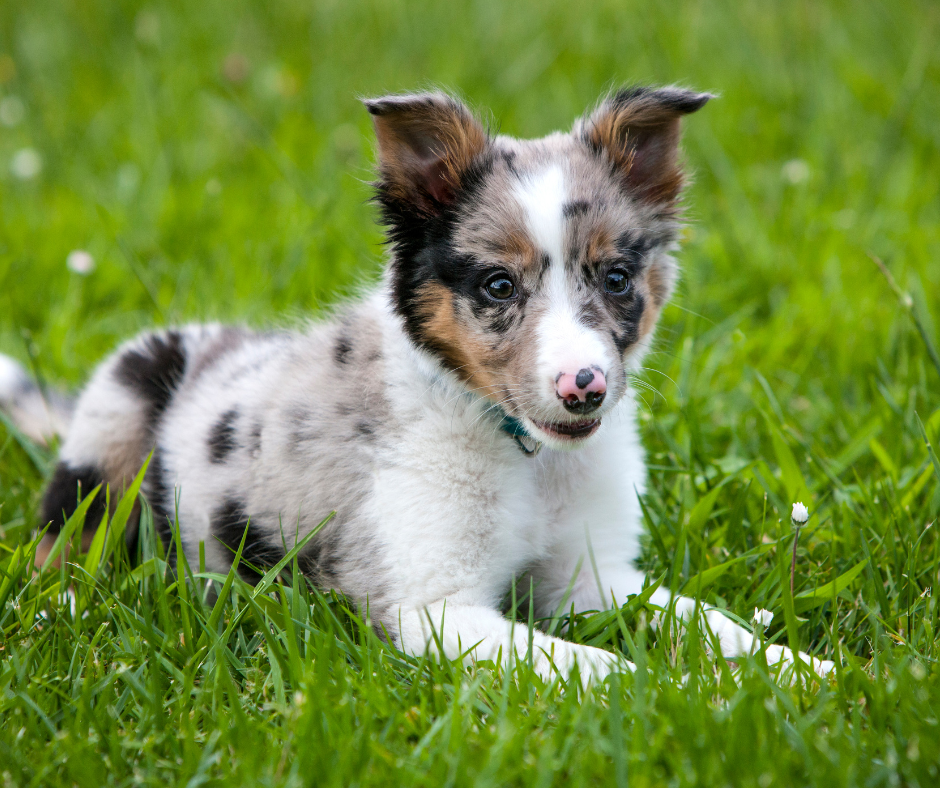
Crate training a Border Collie can present unique challenges due to their high intelligence and energy levels. Recognizing and effectively addressing these challenges is key to successful training.
Handling High Energy and Anxiety:
-
Exercise Before Crating: Given their high energy, ensure your Border Collie has ample exercise before crate time. A tired dog is more likely to relax in the crate.
-
Anxiety Reduction: Use calming techniques like leaving a piece of clothing with your scent or playing soft music. If your dog shows signs of anxiety, such as excessive whining or pacing, gradually increase crate time to accustom them to being alone.
Read More: Best Dog Crates for Anxiety
Overcoming Resistance to the Crate:
-
Positive Introduction: Make initial encounters with the crate positive. Place treats and favorite toys inside the crate without forcing entry.
-
Incremental Training: For hesitant dogs, start by feeding near the crate, then inside with the door open. Progress to closing the door for short periods during feeding.
Dealing with Barking:
-
Understanding the Cause: Determine if barking is due to a need, like using the bathroom, or if it’s attention-seeking behavior.
-
Training and Distractions: Provide toys or puzzles in the crate to keep your Border Collie occupied. Train them to understand a ‘quiet’ command and reward compliance.
8. Balancing Crate Time with Exercise and Play
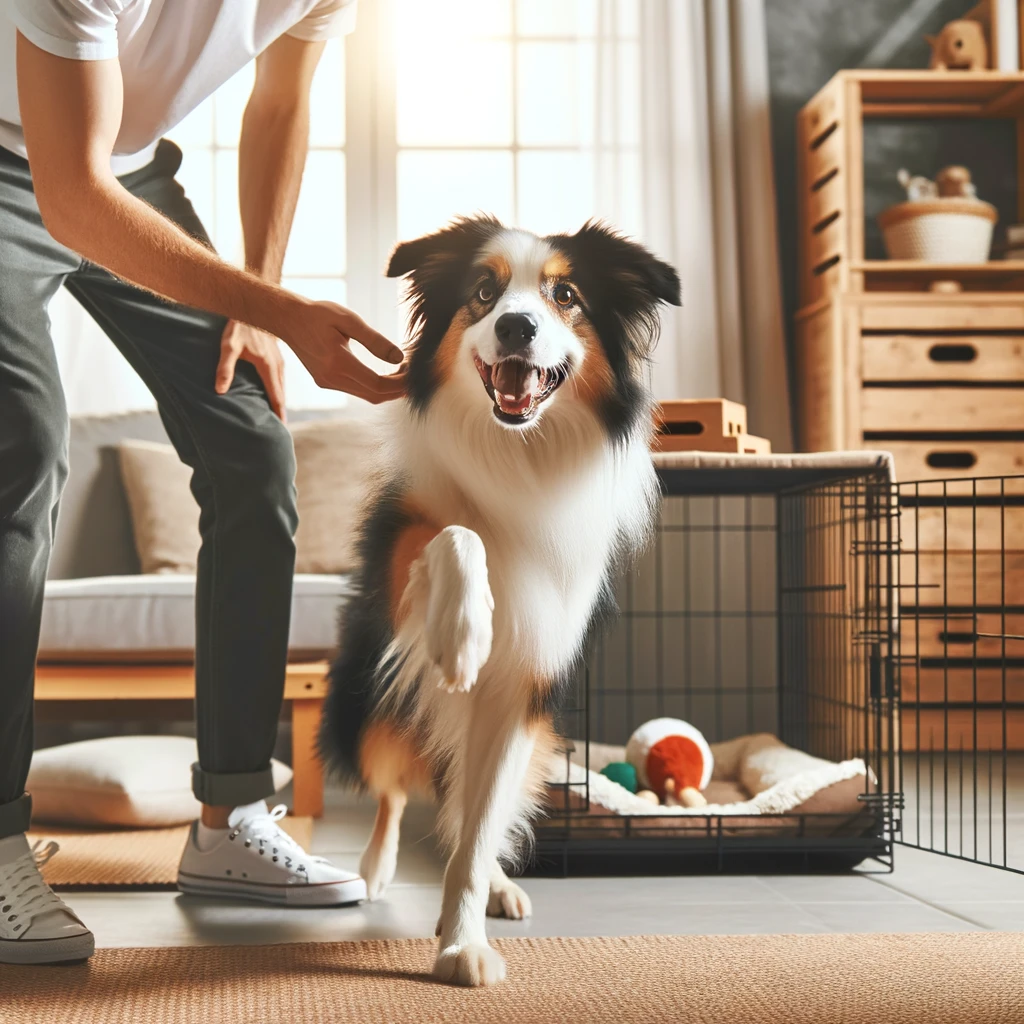
Ensuring a healthy balance between crate time and active play is essential for the well-being of a Border Collie puppy, a breed known for its high energy and intelligence.
Importance of Adequate Exercise:
-
Physical Needs: Border Collies require significant physical exercise daily. Without enough activity, they may become restless or develop unwanted behaviors.
-
Types of Exercise: Include a mix of activities like long walks, running, fetching, and agility training to cater to their physical and mental stimulation needs.
Mental Stimulation is Key:
-
Interactive Play: Engage your Border Collie in games that challenge their intelligence, such as puzzle toys, hide-and-seek, or advanced training exercises.
-
Training as Play: Incorporate training sessions into playtime. This not only keeps them mentally stimulated but also strengthens the bond between you and your dog.
Creating a Balanced Routine:
-
Structured Schedule: Develop a daily routine that includes specific times for exercise, play, and relaxation in the crate. Consistency helps your dog understand what to expect each day.
-
Post-Exercise Crating: Consider crate time after a period of exercise and play, as your dog will likely be more willing to rest.
9. Crate Training Across the Border Collie’s Lifespan
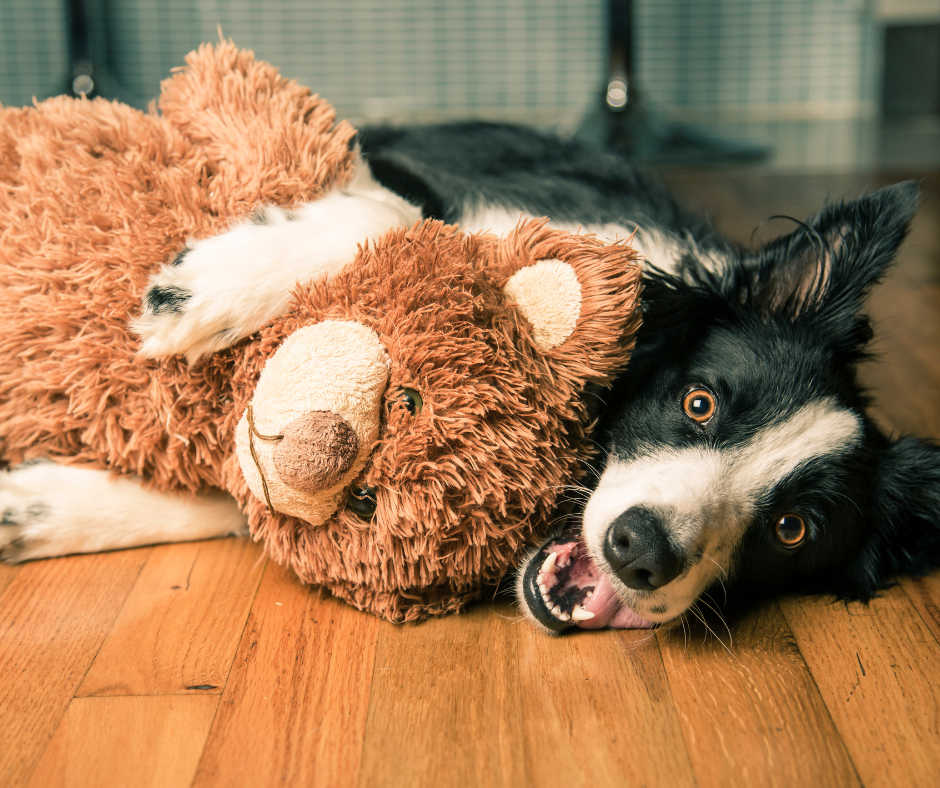
Adapting your crate training approach to suit the changing needs of your Border Collie puppies at different life stages is crucial for ongoing success.
Puppy Stage:
-
Early Introduction: Start crate training early in your Border Collie’s life. Puppies adapt quickly but require frequent potty breaks and shorter crate durations.
-
Positive Reinforcement: For your Border Collie puppy, use treats and praise to create a positive association with the crate from a young age.
Adult Stage:
-
Maintaining Routine: Adult Border Collies benefit from the consistency and security of a crate routine. Continue using the crate as part of their daily schedule.
-
Adjust for Energy Levels: Adult Border Collies are very active. Ensure they receive enough physical and mental exercise to comfortably settle in the crate.
Senior Stage:
-
Comfort is Crucial: As your Border Collie ages, they may need more comfortable bedding in the crate to support aging joints.
-
Monitor Health: Be observant of any signs of discomfort or health issues that may affect their time in the crate. Older dogs may require more frequent breaks and shorter crate durations.
Adapting crate training practices across the lifespan of your Border Collie ensures that they continue to view the crate as a safe and comfortable space. This requires ongoing commitment and adjustment to their changing needs.
Read More: The Best Dog Gifts for Dog Lovers
Conclusion

Successfully crate training your Border Collie not only enhances their safety and well-being but also contributes to a harmonious living environment. Throughout this guide, we’ve explored various aspects of crate training tailored to the unique needs of Border Collies, a breed known for its intelligence, energy, and sensitivity. Key to this process are understanding the breed’s specific requirements, maintaining a balance between crate time and physical activity, and adapting the training approach as your dog matures.
Remember:
-
Consistency and patience are crucial in crate training.
-
A balance of physical exercise, mental stimulation, and crate time is essential for a happy, healthy Border Collie.
-
Adapting training methods to your dog’s life stage ensures long-term success.
By following these guidelines and approaches, you can make crate training a positive experience for both you and your Border Collie pup, fostering a strong bond and a safe, enjoyable home life.
FAQs: Border Collie Crate Training
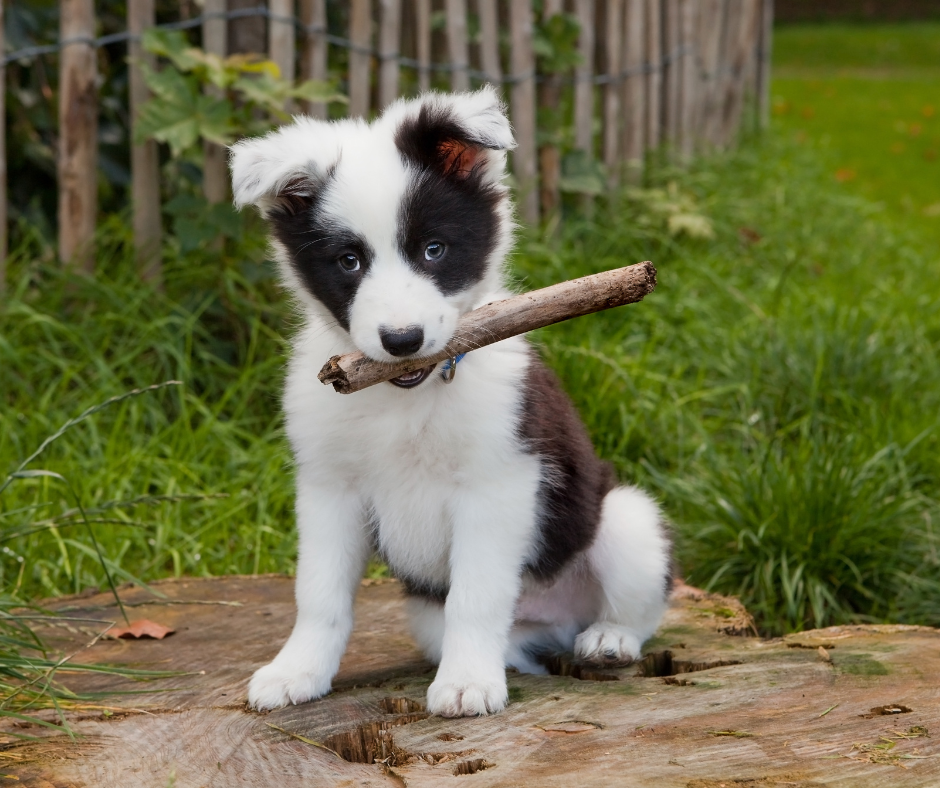
-
What size crate is best for a Border Collie?
-
Generally, a 36-inch to 42-inch crate is suitable for most Border Collies, allowing them enough room to stand, turn, and lie down comfortably.
-
-
How long should a Border Collie be left in a crate?
-
Adult Border Collies can be crated for up to 4-6 hours, but they should not be confined for extended periods. Puppies require more frequent breaks.
-
-
Can crate training help with a Border Collie’s separation anxiety?
-
Crate training can provide a secure space for a Border Collie, potentially reducing separation anxiety. It’s important to combine this with other anxiety-reducing strategies.
-
-
What should I do if my Border Collie whines in the crate?
-
Ensure their basic needs are met first. If whining continues, it’s important not to let them out while they’re whining. Wait until they calm down to avoid reinforcing the behavior.
-
-
How can I make crate training easier for my Border Collie?
-
Introduce the crate gradually with positive reinforcement. Ensure your Border Collie gets sufficient exercise and mental stimulation to relax comfortably in the crate.
-

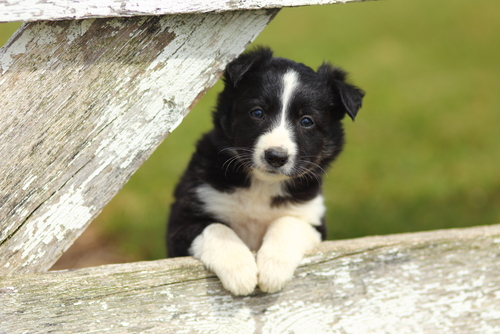
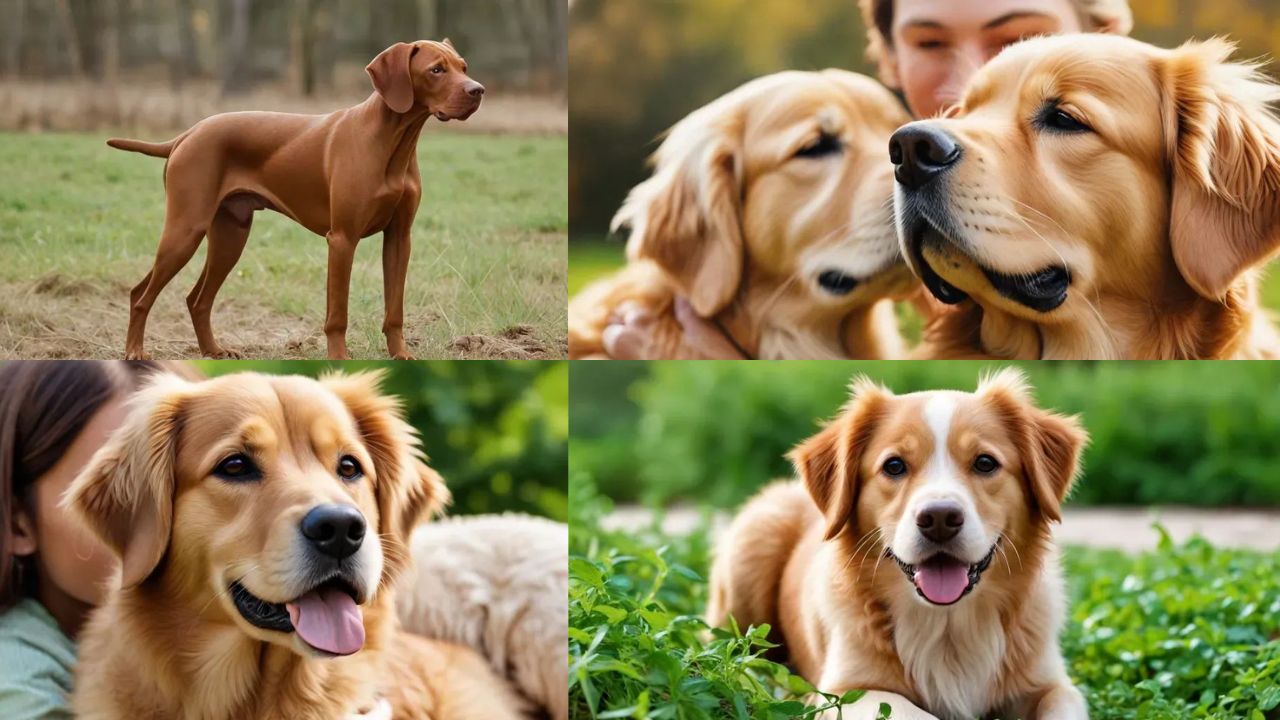

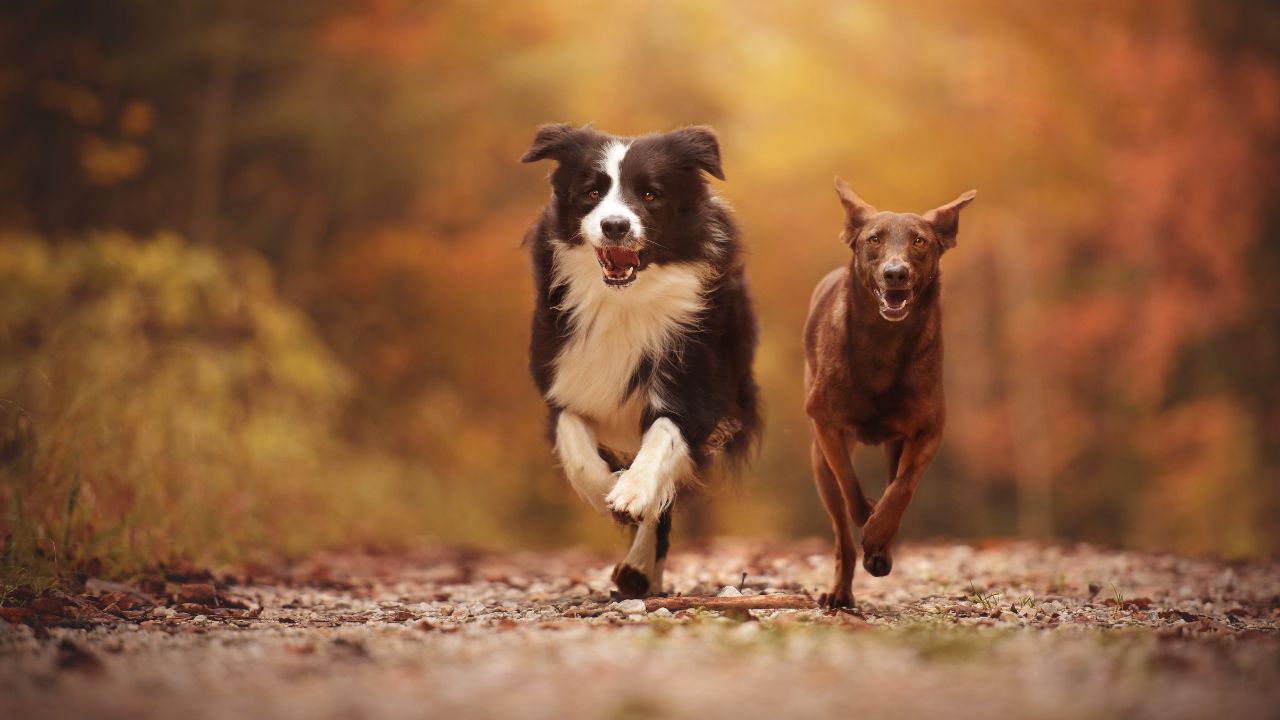

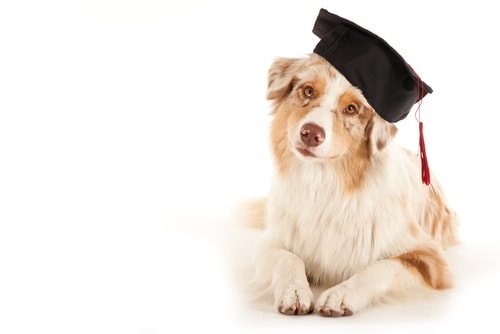

Get involved!
Comments